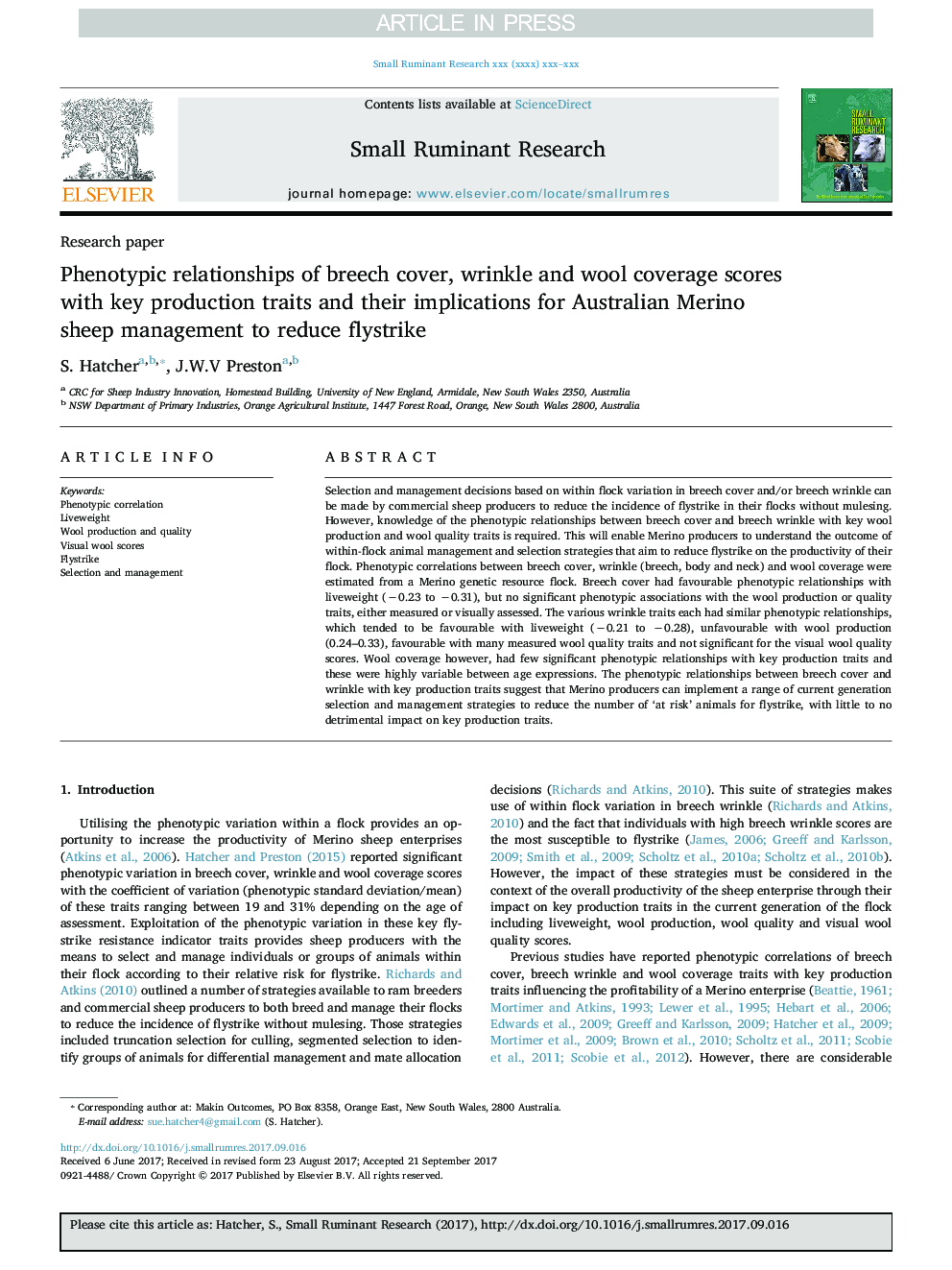| Article ID | Journal | Published Year | Pages | File Type |
|---|---|---|---|---|
| 8504363 | Small Ruminant Research | 2017 | 7 Pages |
Abstract
Selection and management decisions based on within flock variation in breech cover and/or breech wrinkle can be made by commercial sheep producers to reduce the incidence of flystrike in their flocks without mulesing. However, knowledge of the phenotypic relationships between breech cover and breech wrinkle with key wool production and wool quality traits is required. This will enable Merino producers to understand the outcome of within-flock animal management and selection strategies that aim to reduce flystrike on the productivity of their flock. Phenotypic correlations between breech cover, wrinkle (breech, body and neck) and wool coverage were estimated from a Merino genetic resource flock. Breech cover had favourable phenotypic relationships with liveweight (â0.23 to â0.31), but no significant phenotypic associations with the wool production or quality traits, either measured or visually assessed. The various wrinkle traits each had similar phenotypic relationships, which tended to be favourable with liveweight (â0.21 to â0.28), unfavourable with wool production (0.24-0.33), favourable with many measured wool quality traits and not significant for the visual wool quality scores. Wool coverage however, had few significant phenotypic relationships with key production traits and these were highly variable between age expressions. The phenotypic relationships between breech cover and wrinkle with key production traits suggest that Merino producers can implement a range of current generation selection and management strategies to reduce the number of 'at risk' animals for flystrike, with little to no detrimental impact on key production traits.
Related Topics
Life Sciences
Agricultural and Biological Sciences
Animal Science and Zoology
Authors
S. Hatcher, J.W.V Preston,
